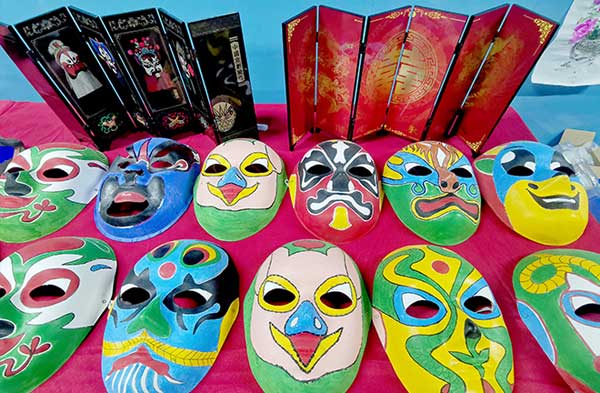Art activities interpreted from folkloristics

Artistic folklore is an interdisciplinary subject that interprets art activities from the perspective of folklore, exploring the internal connections between art activities and folklore as a whole.
Emergence of artistic folklore
The rise of artistic folklore does not come from nowhere, but has been accumulated over time. InAn Introduction to Chinese Folk Artpublished about eight decades ago, folklorist Cen Jiawu argued that folklore studies can be divided into “general folklore” and “special folklore,” and the latter can be further grouped into “religious folklore” and “artistic folklore.” The research object and research content of artistic folklore were preliminarily defined.
At the beginning of the 21st century, artistic folklorists consciously joined the wave of shifting focus to ordinary people in fieldwork in Chinese academia, and comprehensively examined the autonomy of art activities and local social life, striving to break out of the closed analysis of art ontology and integrate it into the overall logic of human life.
In recent years, artistic folklorists have described in depth the case study of “the art of country folks,” and tried to understand and explain the vivid folk traditions behind the art of country folks through field investigations, exploring the theoretical system of Chinese native art on this basis and furthering the understanding and interpretation of Chinese civilizational forms.
According to Zhang Shishan, director of the Institute of Intangible Cultural Heritage at Shandong University, field research is the lifeline of artistic folklore—in the life scenes where art occurs, the survival wisdom and self-generation reflected by individuals of the populace are the key linking “art” and “folklore.” Only through fully accumulating cases of country folks’ art and comprehending the individual cultural creative spirit of the people, can the true meaning of artistic folklore be seen.
Starting from this, artistic folklore seeks to understand art in the context of overall social networks and specific life situations, which is not only different from previous “pure art” research, but also from the long-standing research mode of clear art categorization. Zhu Zhenhua, an associate professor from the Rural China Research Center at Qilu Normal University, suggested that artistic folklorists not only focus on how art is produced in social life, but also on how art affects the change of social life, as well as what the changes in social life mean for the art system that adheres to traditions, presenting an interactive relationship between art and the society as a whole.
Academic missions
“One of the academic missions of artistic folklore is to reveal the interactive relationship between people’s living art and the form of Chinese civilization,” said Zhang. To seek a new breakthrough, artistic folklorists should take “art activities as a folk phenomenon,” or the art of life, as a core research field, taking it as an important component of Chinese civilization forms and a life support in the process of Chinese civilization. In addition,“art” defined by artistic folklore is not only the art of daily life, but also the art of life in civilizational forms.
In particular, the perspective of “interaction between rites and folklore” provides an important research topic for artistic folklorists, Zhang continued. On the one hand, it pays attention to the multiple interactions between art activities and national processes, local social development, and people’s daily life, highlighting the prominent role of artistic elites in the art of country folks. On the other hand, the art of country folks, as a kind of local tradition, is a cultural tool for the people to form consultations with national politics and the local power system, embodying folks’ feelings for families and the nation through local customs. In this regard, only when artistic folklore, based on the empirical nature of fieldwork, emphasizes the continuation of the whole discourse of “a ritual and folk China,” can it truly embark on a promising academic path.
Future development
The future development of artistic folklore must be closely linked with major national strategies such as the protection of intangible cultural heritage. Fang Lili, president of the China Society for Anthropology of Arts, believes that art, from the vision of artistic folklore, is different from traditional art. It is art in life, art in social context, in other words, it is a part of Chinese people’s life and culture. At present, the protection of intangible cultural heritage in China is in fact integrated with folk art protection, which requires that the future development of artistic folklore sync with the protection of intangible cultural heritage.
As for the research strategy of artistic folklore, Zhang proposed proceeding from two paths: the study of folk art and the study of art folklore, which represent the observation and understanding of the art of life from different perspectives, and are different views of artistic folklore as an interdisciplinary subject. However, both are the art of daily life and the art of life in civilizational forms. They are used, inherited, and created, as well as play a role in the process of daily livelihood, life, communication, and the evolution of civilizational forms. In addition, it is necessary to seek the contemporary value of artistic folklore from the vivid folklife, enhancing cultural confidence.